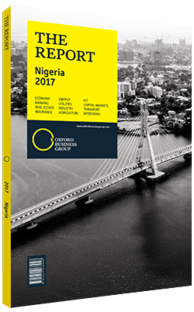Nigerian government launches its Economic Recovery and Growth Plan
In response to Nigeria’s 2016 recession, the government launched the Economic Recovery and Growth Plan (ERGP) in March 2017. The ERGP sets out broad targets ranging from macroeconomic stability to economic diversification and improving governance. It identifies five priority areas: stabilising the macroeconomic environment; achieving agricultural and food security; improving transportation infrastructure; ensuring energy sufficiency; and driving industrialisation.
Given recent uncertainties in the economy, macroeconomic stabilisation is seen as the key to unlocking growth and progress in the other four areas. Key features of the macroeconomic proposal include taking a holistic approach to fiscal, monetary and trade policies to meet developmental goals; diversifying government revenues away from dependency on oil; cutting costs; and privatising government assets.
A New Resolve
Nigeria has had no shortage of bold reform agendas throughout its post-independence history, but a failure to implement these policies has often been the ultimate result – something that President Muhammadu Buhari’s administration is keen to avoid. “We have had so many plans in Nigeria – Vision 2010, Vision 2020, the Transformation Agenda – and the problem has always been implementation,” Wilson Erumebor, a research analyst at Lagos-based think tank the Nigerian Economic Summit Group, told OBG. “What they did differently with this plan was to set up a special delivery unit within the presidency to work with the ministries and oversee implementation.”
The ERGP has received plaudits from external observers. In early 2017 the IMF released its Article IV Consultation document, which detailed its reform prescriptions for the Nigerian economy. The fund praised the government’s efforts, and stated that the “ERGP appropriately focuses on private sector-led economic diversification, with the government delivering on targeted infrastructure, strengthening the business environment and promoting employment opportunities.”
Aiming High
The ERGP’s broad objectives are central to fostering sustainable economic growth and reducing structural weaknesses, such as unemployment and exposure to commodity volatility. Many of the economic and revenue assumptions in the plan are based on increased oil production, which is projected to rise from 1.6m barrels per day (bpd) in 2016 to 2.2m bpd in 2017 and 2.5m bpd by 2020. So far, 2017 has seen production waver, dropping to 1.4m bpd in the first quarter before recovering to 2m in June – a 17-month high. However, reaching 2.5m bpd may require fresh investment in upstream fields, given that Nigeria has managed this level of production only twice before: during the late 1970s and again between 2010 and 2012.
The IMF projects real GDP growth of just 0.8% in 2017. This contrasts with government forecasts of 2.2%, based on structural improvements flowing from the ERGP. For the government to reach its growth target for 2017 and subsequent years, it is imperative that concrete policies and legislation are put in place to enable the reality envisioned in the ERGP to come to pass.
Reconciling Strategies
There are other sources of divergence between the ERGP and IMF recommendations, particularly in terms of policy prescriptions on monetary policy and taxation. The IMF has advocated a tightening of monetary policy to encourage capital inflows and anchor inflation expectations. However, the Central Bank of Nigeria has been reluctant to increase its benchmark monetary policy rate, which at 14% is at its highest level in over a decade, while Kemi Adeosun, the minister of finance, has advocated looser monetary policy to spur growth. The IMF has also recommended a gradual rise in the value-added tax (VAT) rate from 9% at the start of 2017 to 15% by 2020, which would still fall below the ECOWAS average. However, the government has expressed concern over the impact of an increased tax burden on top of high inflation, and announced plans for the rise in VAT to not take place until 2018, and to apply to telecoms and luxury goods only.
You have reached the limit of premium articles you can view for free.
Choose from the options below to purchase print or digital editions of our Reports. You can also purchase a website subscription giving you unlimited access to all of our Reports online for 12 months.
If you have already purchased this Report or have a website subscription, please login to continue.

